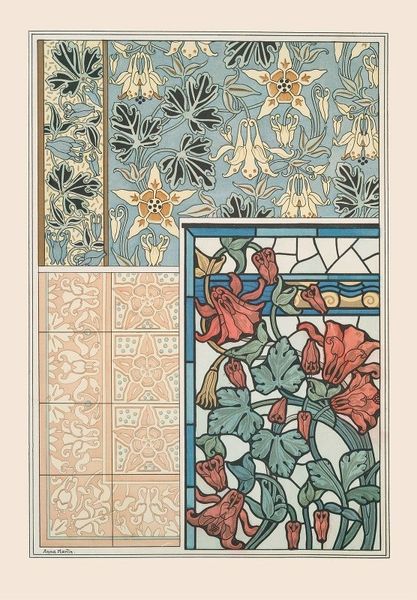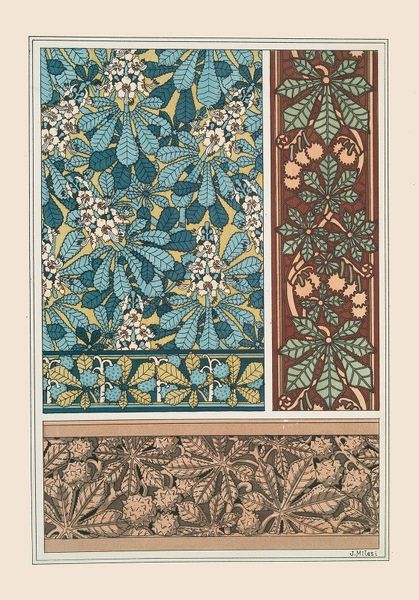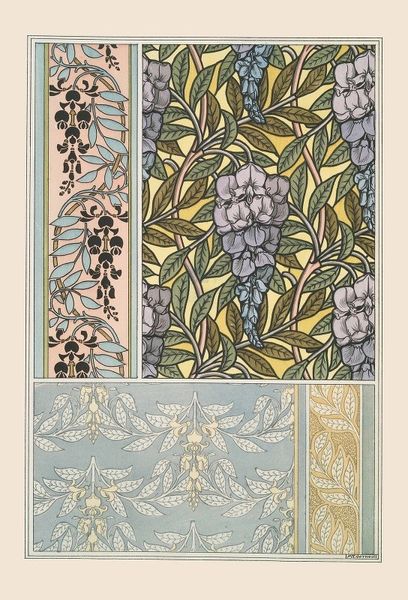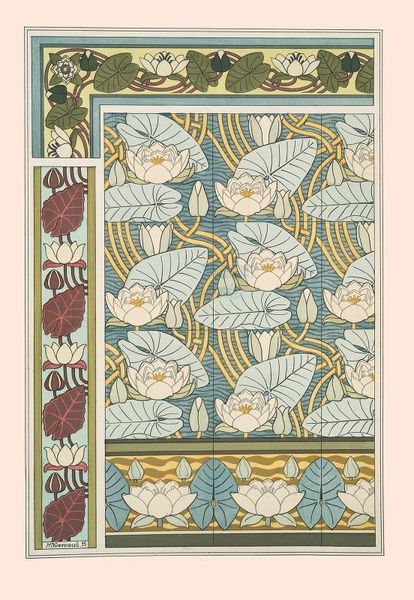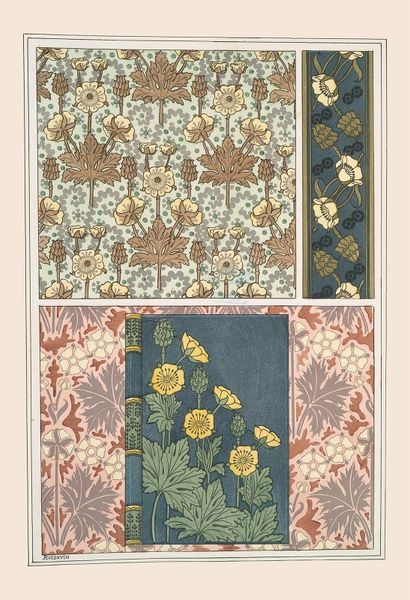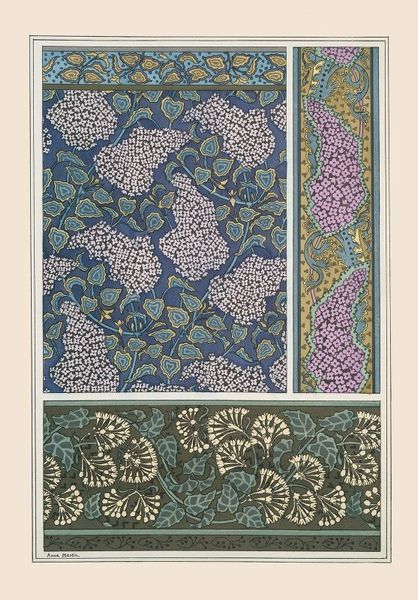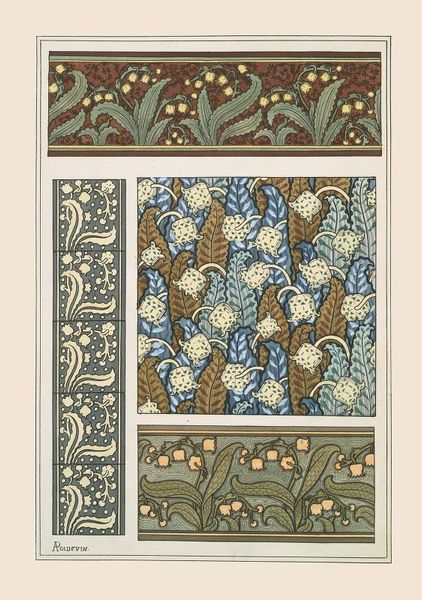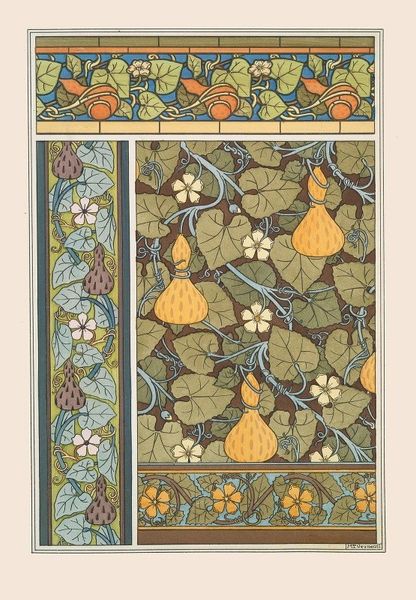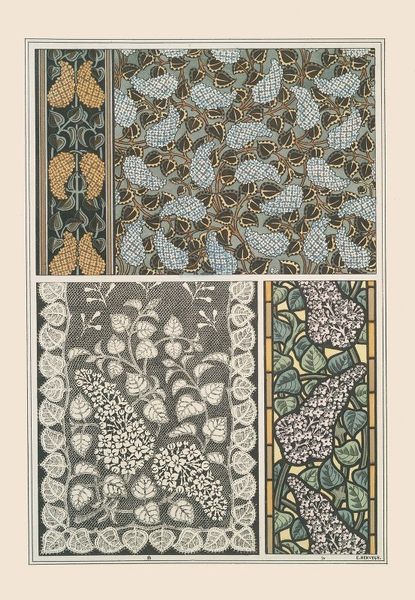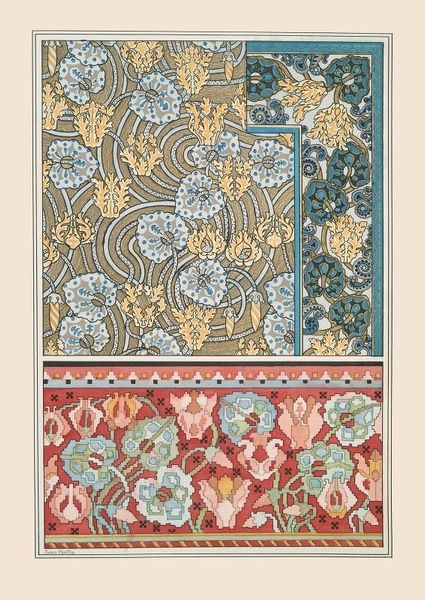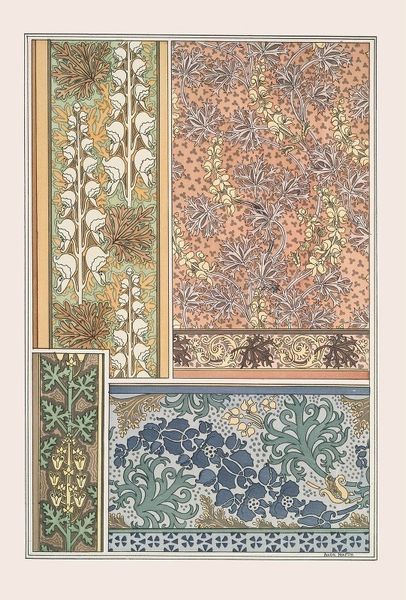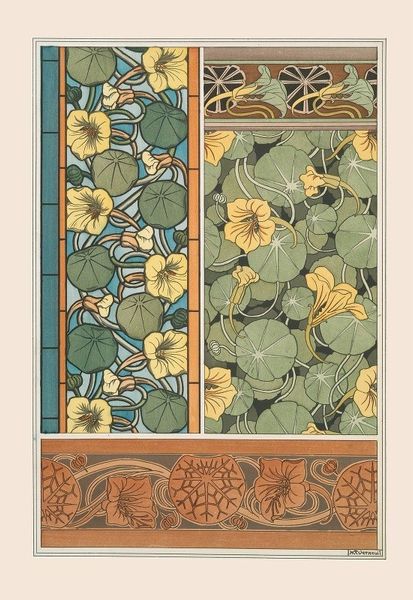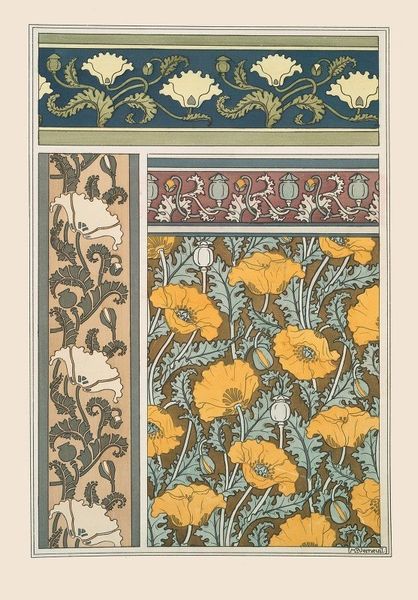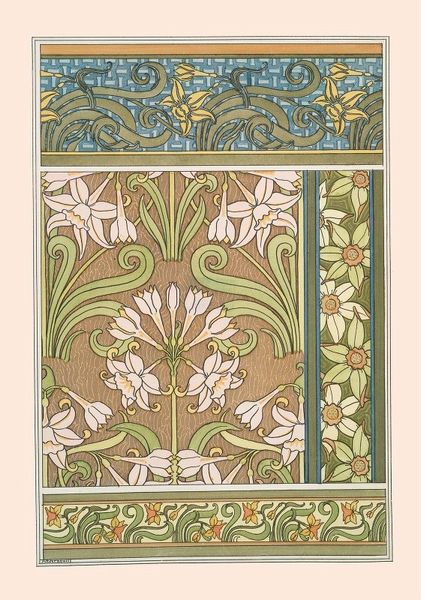
graphic-art, print
#
graphic-art
#
naturalistic pattern
#
organic
#
art-nouveau
# print
#
pattern background
#
ethnic pattern
#
organic pattern
#
flower pattern
#
repetition of pattern
#
vertical pattern
#
pattern repetition
#
textile design
#
decorative-art
#
layered pattern
Copyright: Public Domain: Artvee
Curator: Here we have "Capucine 3" designed by Maurice Pillard Verneuil, dating back to 1896. It seems to be a study of capucine flowers, likely intended for textile design. What's your initial reaction to this piece? Editor: It strikes me as simultaneously soothing and meticulously organized. The color palette is restrained yet appealing, but the sharp borders and repetition feel almost industrial. Curator: Indeed, it's a fascinating interplay. The work’s purpose as a textile design informs that repetition. Verneuil was deeply involved with Art Nouveau, which sought to elevate crafts to the level of fine art. It speaks volumes about the changing perception of design and labor during that period. Editor: Looking closer, I'm drawn to how Verneuil uses line to create depth despite the flattened perspective. Note the curvilinear patterns, typical of Art Nouveau. They lead your eye through a structured but sensual rhythm. The composition invites you to linger and explore each discrete area. Curator: Precisely! These kinds of repeating patterns would be ideally suited to industrial production. His work challenges conventional hierarchies. Verneuil was attempting to merge artistic creativity with mass manufacturing processes of the era, which is interesting to consider. Editor: I'm thinking about the use of naturalistic forms within geometric frameworks. Notice that contrast reinforces the design's core aesthetic: where is the push and pull between nature and artifice? How are different states of pattern depicted: blooming, trimmed, budding, ready for print? Curator: The materials used would certainly influence the end result—the texture of the fabric, the dyes available. These constraints would have impacted the final iteration and influenced the perception and consumption of these designs. It really makes you consider what these textiles were trying to say about taste, nature, and labor. Editor: I concur. Considering how this design translates across surfaces, shapes and scales would dramatically shift its cultural function. Thank you for highlighting this example; it highlights the material conditions of making as it embodies beauty in design. Curator: A wonderful consideration of aesthetics in practice! A fine exploration that encourages questions about artistic practice and manufacturing history.
Comments
No comments
Be the first to comment and join the conversation on the ultimate creative platform.
